Haverford CollegeLibraries
Past Main Gallery Exhibits
Past Exhibits are listed in reverse chronological order.

Forgotten Voices: Illuminating Nineteenth-Century Mental Health Care
August 26 - December 22, 2024
Curated by the members of Professor Jess Libow's spring 2024 first-year writing seminar, "Health and the Humanities"
This exhibit documents the complex history of nineteenth century mental health care using letters, asylum records, medical treatises, and patient accounts from Haverford College’s Quaker & Special Collections. The exhibit includes information on psychiatric care, the structures that surround and influence the operation of mental health institutions, and the evolution of mental health care while foregrounding patient experiences as much as possible.

Beyond the Floating World: Traversing Space and Time Through Ukiyo-e
February 19-July 5, 2024
Curated by Stephanie Wang BMC '24
The works in the Arnold Satterthwait collection belong to an artistic tradition known as “images of the floating world” (ukiyo-e 浮世絵), the visual and material manifestation of a unique culture that emerged and flourished in Edo period Japan (1605-1868). To live in this floating world was to detach oneself from the monotony and frustrations of the quotidian and surrender to the ephemeral pleasures of the here-and-now. The floating world culture gave rise to and found its most vivid expression in the artistic genre of ukiyo-e. Prints, at the heart of a mass-produced commercial enterprise, were readily available to the public through a citywide distribution system of publishing houses and print shops. Ukiyo-e offered a point of access, a way of seeing inside the floating world. However, the floating world as it existed within the pictorial space of woodblock prints extended far beyond the space and time of the urban locales that gave birth to it.

Paul B. Moses: Haverford Graduate, Trailblazing Art Historian
August - December, 2023
Curated by Michael A. Moses and Stephanie Strother with an accompanying essay by Emma Scharff ‘25
Paul Bell Moses (1929–1966) was an art historian and critic whose remarkable life was defined by barriers overcome. As one of the first Black students to attend Haverford College, Moses encountered significant racism. However, the College’s relationship with the Barnes Foundation in nearby Merion nourished his passions for art history and art making.

Enduring Presence 2023: Lenape Nation of Pennsylvania Art
January—July 20232
Curated by Adam Waterbear DePaul and Lily Sweeney ‘23 with Digital Exhibit Curator Alex Rodriguez-Gomez ‘23
This exhibit highlights the work of artists of the Lenape Nation of Pennsylvania who, in drawing upon their past, present, and future, have made art for themselves, their community, and to revitalize what has lain dormant. The exhibit showcases the links between the history and present day of the individual and LNPA.

Biopower: Reading Bodies, Regulating Practices
August 15 –December 2022
Curated by the Students in Lisa Jane Graham and Darin Hayton's "Biopower" Spring 2022 History Class and Jian Wei '24
This exhibition was inspired by the events of the past few years of the COVID-19 epidemic and how history might help us to grapple with our current environment. The exhibition identifies five areas where scientific authority, technological developments, and public policy collaborated to define norms and prescribe cures to promote health and protect populations: Madness, Phrenology, Prostitution, Hygiene, and Plagues. Drawing on the insights of the twentieth-century French philosopher of science, Georges Canguilhem, and the work of Michel Foucault, the exhibition highlights the polemical nature of the “norm.”

"The Hundred Tongues of Rumor:" Information, Misinformation, and Narratives in Times of Crisis
December 15, 2021 - July 15 2022
Curated by Nick Lasinsky '23
In times of crisis, people struggle to sort through information and misinformation. Crises push the boundaries of narratives; crises obscure information; crises reinforce those beliefs we incorporate into the way we see the world. This exhibit looks at four moments from the past: the English Civil Wars from 1640 to 1660; the French and Hatian Revolutions of the late eighteenth century; the Yellow Fever epidemic that struck Philadelphia in 1793; and one man’s perspective on the Vietnam War from 1960 to 1973. This exhibit demonstrates the power of story, rumor, and rhetoric when it seems as though the world is falling apart around us.

Out of the Stacks! Students and Staff Explore Quaker & Special Collections
August 16-November 30, 2021
The material qualities of rare books and manuscripts often tell us as much as the texts they house. “Out of the Stacks!” is an exploration of the variety of materials that can be found in Quaker & Special Collections: published and unpublished, visual and textual, old and contemporary. It features a variety of materials, many of which connect historical materials to issues we are confronting in our current world. While some of the topics may be familiar or expected, others showcase lesser-known aspects of Haverford’s collections. Items were selected, researched, and written about mainly by student colleagues in the Libraries during the spring and summer of 2020.

Writing the Modern World: Wallace Stevens, William Carlos Williams, and Science and Technology in the United States
March 1 - July 16, 2021
Curated by Charlotte Scott '21
Wallace Stevens (1879-1955) and William Carlos Williams (1883-1963) are two of the 20th century’s most exemplary American poets. In a moment of crisis and change, Williams and Stevens helped further the modernist poetry movement and craft a new American poetry. This exhibit focuses on the interactions and dialogue each man had with science and technology. Developments in commerce, communication, and travel accelerated the pace of everyday life, while discoveries in physics and chemistry changed the conception of reality itself. Changes in print technology had enormous consequences for the publishing world, greatly impacting the spread of modernist poetry. Both Williams and Stevens were significantly affected by the scientific and technological changes of the early twentieth century, but they responded to those changes very differently. Despite distinctions in the form and style of their work, both shared a common interest in creating a new poetry for a truly modern, and truly American, world.
The books, letters, and other documents featured in this exhibit come from the collection of Alan Klein, HC ‘81.

Romanticizing Japan: Contextualizing Japan Through the Western Gaze
October 27, 2020-February 5, 2021
Curated by the students of the Spring 2020 Japanese Modernism Across Media seminar
The photograph, along with the new and unfamiliar presence of the West, marked a shift in Japan’s exterior image. The subjects that Japanese photographers chose were the same as those of the native arts of the late feudal period: famous places, women and actors. However their presentation was influenced by tourism. Japanese photographers saw opportunity in selling images of traditional aesthetics and customs that were commonplace to the Japanese, but that appealed to fresh foreign eyes. This gave birth to the tourist photograph; a platform to present a stereotyped view of Japanese culture, or how it was perceived to be. As seen through early photography, Japanese culture was romanticized to pander to the Western gaze. This curated Japan’s impression upon the outside world, portraying it as a traditional nation impervious to modernity rather than one rapidly developing in industrialization. “Romanticizing Japan: Contextualizing Japan Through the Western Gaze” explores the modes in which Japan was displayed—either realistically or idealised—for a local and global audience.

Crossing Borders: From Slavery to Abolition, 1670-1865
March 2–October 1, 2020
Curated by Sarah Wilma Watson and the students of the Fall 2019 Crossing Borders writing seminar
In “Crossing Borders,” students explored geographic, linguistic, social, and racial border crossing through literature. After reading Aphra Behn’s Oroonoko (1688), a novella by a white woman about an African prince who is forced into slavery, written before the term “abolitionist” existed, students explored Haverford’s collection of rare books, manuscripts, and maps related to transatlantic travel, the slave trade, and abolition. This exhibit explores the themes of authorship, perspective, and abolitionism in a global context through engagement with Behn’s novel and Haverford’s rare materials.

“Who Created the New and Copied the Old”: Printed Books of the Fifteenth Century
An Exhibition Featuring the David Wertheimer, Class of 1977 Collection of Early Printed Books
October 7, 2019–February 16, 2020
Curated by Alexandra Stern ’20
In the fifteenth century, printing was deeply interwoven with the tradition of the manuscript, even as the production of printed text surpassed that of the traditional manuscript. Commentary on the new technology of the printing press provides a moment that is instantly familiar; concerns about the change from the practices of the existing world in which scribes copied manuscripts to the new technologies of efficiency and mass production are not far removed from the anxieties expressed about contemporary technological developments and their impact on the moral and intellectual culture of the 21st century. “Who Created the New and Copied the Old”: Printed Books of the Fifteenth Century examines the many roles of printed books in the first fifty years following the advent of print, moving throughout medieval Europe through the lens of religion and scholarship to explore the relationship between printed text and its owner.
Download the "Who Created the New and Copied the Old" Catalog

Where is the Penn Treaty Elm?
October 9–December 1, 2017
Curated by Paul M. Farber, Co-Curated by Eleanor Morgan ‘20 As scholars debate the veracity of the 1682 treaty between the Lenni-Lenape and William Penn, the Treaty Tree at Shackamaxon has come to symbolize the treaty and its role in the history of Philadelphia, Pennsylvania, and the United States. Today, the Treaty Tree survives in scions throughout the area, relics created from its wood after it fell in 1810, and in Penn Treaty Park, which commemorates the event. This exhibit explores the many potential answers to the question “Where is the Penn Treaty Elm?”
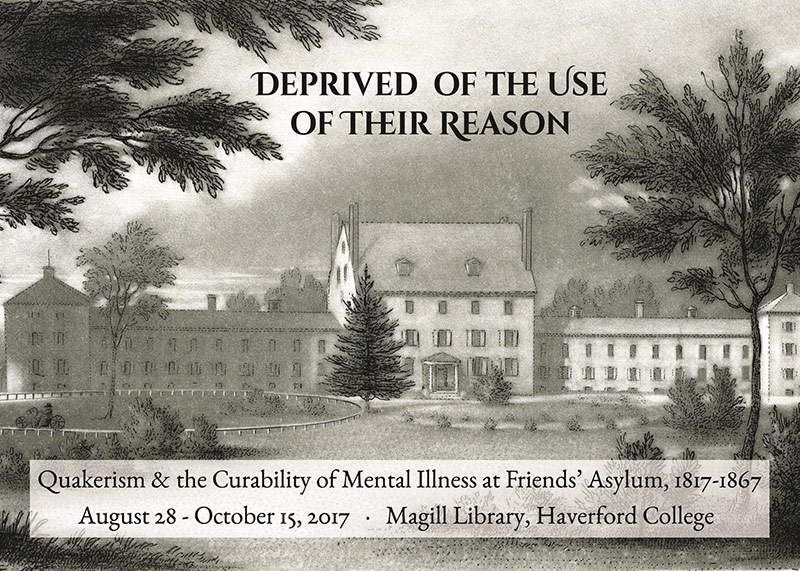
Deprived of the Use of their Reason: Quakerism & the Curability of Mental Illness at Friends’ Asylum, 1817–1867
August 28–October 15, 2017
Curated by Madison Arnold-Scerbo ’18 and James Truitt ’17
When Friends’ Asylum for the Relief of Persons Deprived of the Use of their Reason opened its doors in 1817, it offered something new to the Quakers of Philadelphia: a promise to cure insanity. The first private mental hospital in the United States, its designation as an “asylum” marked it as an institution that provided assistance to people in need. The founders of Friends’ Asylum sought to alleviate the tensions that insanity, understood as deviance from nineteenth-century standards of rationality, caused for Philadelphia’s Quaker families. Friends’ Asylum drew on techniques from a variety of traditions to cure insanity and restore patients to their families. It grounded its therapies in the culture and spirituality of Quaker communities, in contemporary ideas about health and reason, and in the expertise of medical science. This exhibit includes Friends' Asylum records and other related materials from Quaker & Special Collections, and comes out of the Quakers and Mental Health digital project, found at qmh.haverford.edu.
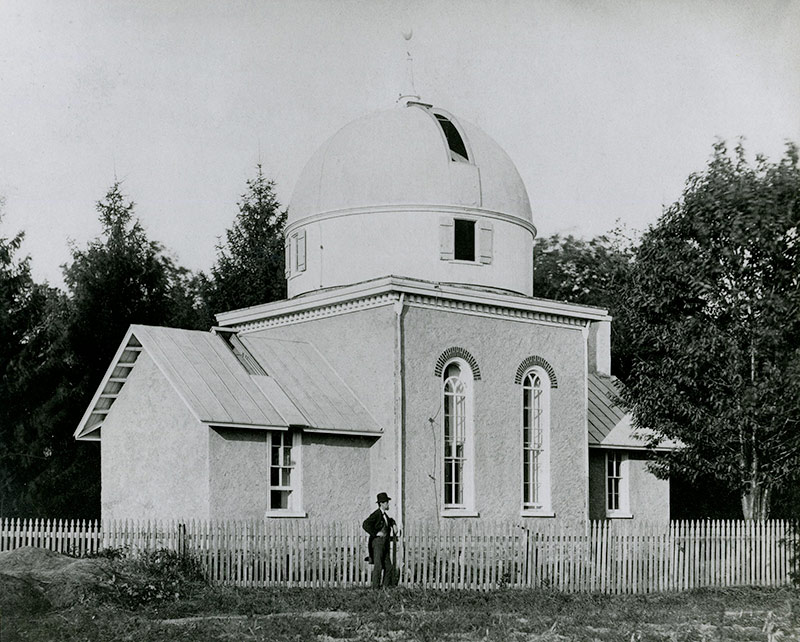
Expanding the Universe: Astronomy and the Telescope
April 3–July 28, 2017
Curated by Victor Medina Del Toro '17
Expanding the Universe problematizes the conventional wisdom of rapid scientific progress in astronomy after the creation of the telescope. Instead of seeing telescopes as a solution to erroneous ideas about the universe and our position in it, this exhibition illustrates the slow progression of the telescope and of astronomy. When you consider the size of our solar system, let alone the universe, it is understandable that early telescopes would have failed to radically change astronomical ideas. The first telescopes in the early 1600s were capable of only minor discoveries because they lacked magnifying power and were inaccurate in tracking moving astronomical bodies. In observatories, the telescope was overlooked for instruments like quadrants, which were better able to determine and track the position of astronomical objects. The telescope was not the cause of radical change in cosmologies, models which demonstrate organizations of the solar system, because it lacked the sensitivity to prove Earth’s motion. Furthermore, colleges did not advance the telescope until the late 19th century, when it was overdeveloped in its technology but under-employed in astronomical education. This exhibit explores the place of the telescope in these areas from the 1600s to the mid-nineteenth century.

Fenghuang Landscape and Miao (Hmong) Culture - photographs by Bode Wang
March 3–April 15, 2017
Bode Wang
As a Miao scholar and photographer, Mr. Bode Wang has worked on a number of Miao cultural projects as a key member of Fenghuang County Cultural Relics Bureau. Concurrently serving as the head of Xiangxi Photographer Society, he has also devoted himself in promoting the understanding and appreciation of the landscape and culture of the Miao homeland with images. Through his lens, he illustrates a colorful and sophisticated world of the Miao nationality. On exhibition are a sampling of his photos, demonstrating the environment, human communities, social customs, and religious practices of his hometown. This exhibit is sponsored by the Luce Initiative on Asian Studies and the Environment (LIASE); Bi-Co East Asian Languages and Cultures Department; Bryn Mawr College 360 Program, Endowed Lectures Fund, Langlois Memorial Fund, Libraries, and Provost's Office; Swarthmore College Libraries and Modern Languages and Literatures Chinese Section; Haverford College Distinguished Visitors Program and Haverford Libraries.
Visit the "Fenghuang Landscape and Miao (Hmong) Culture" Exhibit Site

Waging Peace: 100 Years of Quakers, Moral Quandaries, and a Quest for Justice
February 13–March 12, 2017
Sophie McGlynn '18
Waging Peace: Quakers, Moral Quandaries, and a Quest for Justice explores the work of the American Friends Service Committee, in its centennial year. This collaborative exhibit engages with critical issues around the ethics of service, what it means for an outsider to come in and provide "relief" and "aid," and the struggles around this issue. Turning towards the future, we continue to ask: What will it mean for the AFSC to continue into the next century?

Ying Li's Geographies
October 6–December 11, 2016
Curated by Faye Hirsch and supported by the John B. Hurford '60 Center for the Arts and Humanities and Haverford College Libraries
Ying Li has traveled great distances, both physically and mentally, to reach the intensity of expression that drives her observation-based art. Geographies surveys the past four years of work by the Chinese-born Li in a selection of more than 100 paintings and drawings on view at Haverford College, where she has taught since 1997. Displayed at Haverford’s Cantor Fitzgerald Gallery and Magill Library, these works—mainly landscapes and city scenes executed at her studio in New York’s Chelsea and at residencies in the U.S. and Europe—show Li taking her signature physicality of execution to new lengths. Squeezing paint directly from the tube onto the surface, raking it over the canvas with a palette knife, brushing it in staccato daubs, or overwriting it with swiftly gouged marks resembling urgent but unreadable text, Li pushes her images to the edge of coherence, an exhilarating position for both creator and viewer.

Carl Van Vechten: O Write my Name—Portraits of the Harlem Renaissance and Beyond
January 29–August 12, 2016
Curated by William E. Williams
This exhibition of photographs by Carl Van Vechten (1880–1964), a proponent of the avant-garde and African American cultural expression, features the complete set of 50 photogravures published in 1983 by the Eakins Press. These photographs depict many of the leaders of African American culture and the Harlem Renaissance. The exhibition also includes a rich trove of books, letters, and related artwork by the men and women depicted in the photographs.

Testimonies in Art & Action: Igniting Pacifism in the Face of Total War
October 6–December 11, 2015
Curated by J. Ashley Foster, Visiting Assistant Professor of Writing and Fellow in the Writing Program, Haverford College, and students from her "Peace Testimonies in Literature and Art" Spring and Fall 2015 Writing Seminars
Testimonies in Art & Action: Igniting Pacifism in the Face of Total War creates a historical juncture with our present moment, illuminating how philosophies of non-violence contained in art, literature, and action have been mobilized to stage a critical intervention in a progressively militarizing population. This exhibition juxtaposes primary source materials from the Quaker relief effort in Spain, much of which is from Haverford’s own Quaker & Special Collections, with student digital humanities projects that explore the peace testimonies embedded in the literature and art of the interwar period. In bringing together these multi-modal sources, this exhibition demonstrates the shared commitment to social justice and human rights that the pacifisms of the early twentieth century developed, particularly in the testimonial activism of the Society of Friends and public intellectuals. It aims to create a scholarly discussion focused on the themes of pacifism, activism, writing, and ethics; forms of resistance to total war; and social justice during the interwar period; and it demonstrates the interrelationship between "positive peace," pacifism, and social justice.

Archetypes of Change: The Evolving Comic Book and Its Heroes
February 6–September 7, 2015
Curated by Charlie Espinosa '15 and co-curated by Shahzeen Nasim '16 and Nate Rehm-Daly '16
Archetypes of Change: The Evolving Comic Book and Its Heroes explores the evolution of the comic book between the late 1930s and 1990s through the changing characteristics of its heroes. Using Northrop Frye's "theory of myths," the exhibit classifies four narrative forms—romance, tragedy, irony/satire, and comedy—that provide a framework for understanding how changes in the role and persona of the comic book hero are shaped by larger cultural and political shifts. Through this framework, the exhibit traces a move from Cold War-era hegemonic norms to a more pluralistic approach that challenges rather than reaffirms those norms. Visitors to the exhibit will have the opportunity to enact this turn by "writing" their own comics using colorforms. The exhibit draws from Haverford's student-run comic book collection (housed in Magill Library).

Tales of Troy
March 19–April 24, 2015
Curated by Sarah Horowitz
In collaboration with Bret Mulligan's Tales of Troy class, Special Collections is displaying Greek vases and modern prints. The Greek vases come from the Allen collection, and feature scenes from the Iliad and Greek life. The prints are from a series called "Flight," produced to raise funds for the International Rescue Committee. The prints are on the subject of refugee flight, specifically Aeneas fleeing the burning city of Troy.

Putting the Pieces Together
October 1, 2014–January 5, 2015
Curated by Jenna McKinley '15
The exhibition features Haverford's collection of Ancient Greek vases, donated by Ernest Allen '40, and explores Ancient Greek artistic nature and aspects of collecting and the antiquities trade.

Turn On/Turn Off: 90 Years of Radio at Haverford
May 30–September 7, 2014
Curated by Karl Moll '14
This exhibit explores the origins and trajectory of radio broadcasting at Haverford, beginning in 1923 with live performances, through its many iterations and ups and downs, to a newly reenergized and relaunched web-based collective of audio content and multimedia generated by the Bi-Co community.

As Crow Flies Counterclockwise
April 10–August 29, 2014
Curated by Pato Hebert, Mellon Creative Residence, in collaboration with Shelley DePaui, Chief of the Lenape Nation of Pennsylvania and Instructor of Lenape Language at Swarthmore College
As Crow Flies Counterclockwise tells a story of the Lenape (the traditional people of eastern Pennsylvania and southern New York and New Jersey) from before European settlement in the 17th century through the resulting death and destruction, up to the more recent resurgence of Lenape culture and traditions in our region. In doing so, the exhibition offers a meditation on encounter and connection, language and translation, loss and remembering.

Beyond the Margin: Reading Communities and Rituals of Early Haverford Students
March 21–April 27, 2014
Curated by Jen Rajchel
Beyond the Margin explores the history of Haverford's student reading communities and rituals. From the early Quaker foundations to 19th century student literary societies, the exhibit traces the curricular and co-curricular reading experiences of Haverford students. What did students read in 1885? How were the literary societies crucial to the development of student leadership? Why did students perform an end of the year ritual? We invite you to visit the exhibit, consider these questions, and reflect on the continuities and divergences in Haverford's history through the lens of its reading communities.

Lasting Impressions: Monumental Brass Rubbings
October 26, 2013–January 10, 2014
Curated by Margaret Schaus
The Lasting Impressions exhibition explores three major functions of brasses as represented in the rubbings: to elicit prayers for the soul of the deceased, to preserve familial memory, and, finally, to attest to the person's social status and accomplishments. The rubbings were the gift of Maxine and David Cook and the exhibition was presented in honor of the inauguration of Haverford president Dan Weiss. In addition to the brass rubbings the exhibit also featured medieval and early modern material from Haverford, Bryn Mawr and Swarthmore special collections.
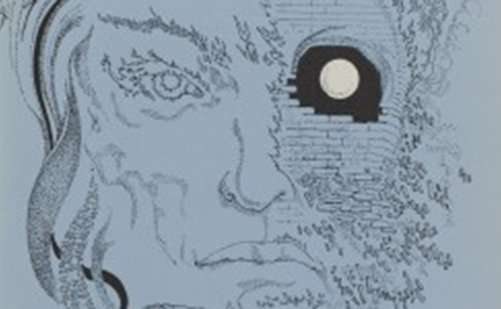
The Material and Immaterial Worlds of Virgil Burnett
October 21–November 22, 2013
Curated by Helen Farley
This exhibit celebrates Professor Maud Burnett McInerney's gift of books written, illustrated, and published by her late father, Virgil Burnett (1928–2012).
Visit the "Material and Immaterial Worlds of Virgil Burnett" Exhibit Site

Harold Edgerton and Walker Evans: Photographs of Golf
May 31–October 6, 2013
Curated by Professor Willie Williams
Thematic to the US golf open that was occurring simultaneously and within close proximity, this exhibit of 20 photographs compared the work of Harold Edgerton and Walker Evans and their photographs of golf..

Who Killed Sarah Stout?: A Participatory Exhibition
February 28–September 20, 2013
Curated by Jen Rajchel with Mary Clare O'Donnell '14
"Who Killed Sarah Stout?" is an exhibit about the Trial of Spencer Cowper in 1699. Sarah Stout was an independent and wealthy Quaker woman from the 17th century who was murdered. This exhibition "reopened" the case and used location-based gaming to solve the case and featured a mobile technology component as well as a physical exhibition.
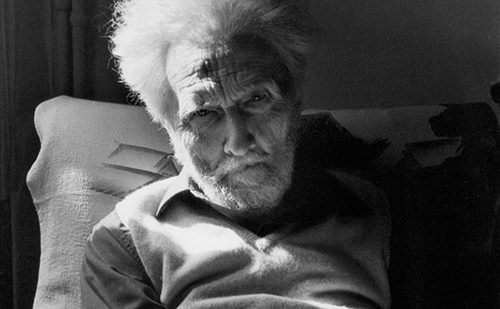
The Fingerprints of Giants
February 25–April 26, 2013
Curated by Vita Litvak
The exhibition highlighted the works of masters of photography and examines several distinct ways of seeing that emerged in twentieth century photography.
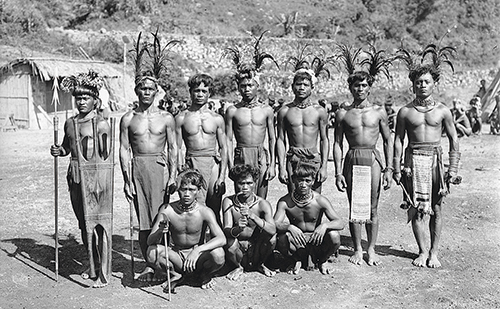
Seeing is Believing: Photographs of American Colonialism in the Philippines
October 25, 2012–February 1, 2013
Curated by Aaron Madow '14
This exhibit seeks to recover and fracture the conflation between sight and belief so important to American colonial arguments about the Philippines.

Imbued with a Better Learning: Student Research at Haverford College
April 3–September 17, 2012
Curated by Margaret Schaus
Drawing heavily on material from the College Archives, the exhibit featured examples of senior capstone experiences over time, from the orations given by graduating seniors in the College's earliest years, to the start of senior theses in 1897, and art exhibits, musical compositions, and electronic theses of today.

Tales of Troy
March 5–30, 2012
Curated by Charlie Espinosa '15 and co-curated by Shahzeen Nasim '16 and Nate Rehm-Daly '16
A small exhibit mounted in the Alcove Gallery in support of Bret Mulligan's course, "Tales of Troy." This included selections from our collection of Greek antiquities, the modern series of prints called "Flight," as well as a video installation of the video "Achilles in Vietnam."

You Are Here: Exploring the Contours of Our Academic Community Through Maps
October 17, 2011–February 10, 2012
Curated by John Anderies
The maps in this exhibition, selected and interpreted by members of the Haverford community including students, faculty, staff, and alums, served to constitute "geography of our community, bringing into relief relationships between our scholarly pursuits, our personal interests, and even our creative styles."

Gather all nations & tongues: Rare & Unique Bibles from Haverford College
March 14–September 16, 2011
Curated by John Anderies
This exhibition, coinciding with the 400th anniversary of the creation of the King James Bible, brought together a selection of rare and unique bibles from the collection dating from the mid-13th century to the 20th century and told stories of the development of language, the movement of people, the history of technology, the wielding of power, and the transmission of culture.

Mirror Mirror
March 2011
Curated by the Women's Center
This exhibit featured photography from female students in the bi-co.
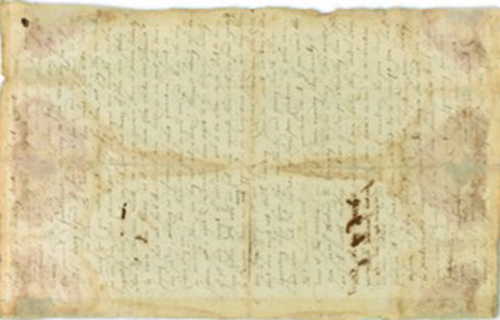
ye Quackers doe here handel men: Confronting Slavery within the Society of Friends, 1676–1776
October 18, 2010–February 11, 2011
Curated by John Anderies
This exhibit featured such notable documents as the 1688 Germantown Protest and the 1696 Cadwalder Morgan Protest, tracts by Quaker abolitionists including Ralph Sandiford, Benjamin Lay, John Woolman and Anthony Benezet, and evidence of Quaker slave ownership in the form of manumissions and meeting minutes.

A Haverford Sampler: A Selection of Masterworks from the Photography Collection
March 3–September 17, 2010
Curated by William E. Williams
This exhibition simultaneously explored the history of the medium while it also provided a peek into the richness of the photography and related Special Collections at Haverford College.

A Few Well Selected Books
October 5, 2007–January 10, 2008
This exhibition tells the story of the first "few well-chosen books" in the Haverford Libraries and honors those who have been responsible for growing this corpus into today's wide-ranging collections.

'Sing ye in the Spirit': Music and Quakerism in Harmony
April 12–September 3, 2004
Curated by John Anderies and Ann Upton
This exhibit examines the complex relationship between music and Quakerism from the founding of the movement to its present.